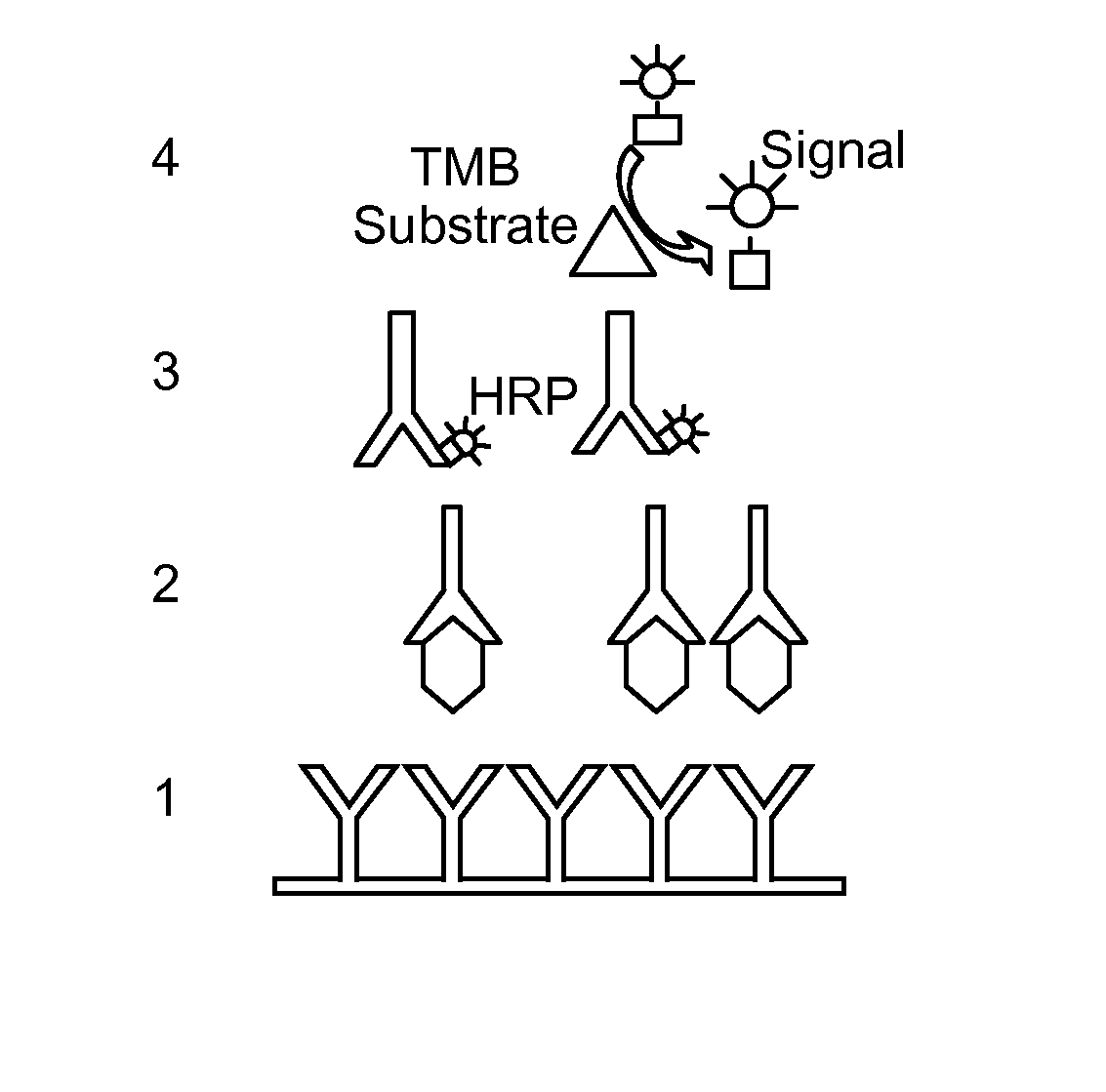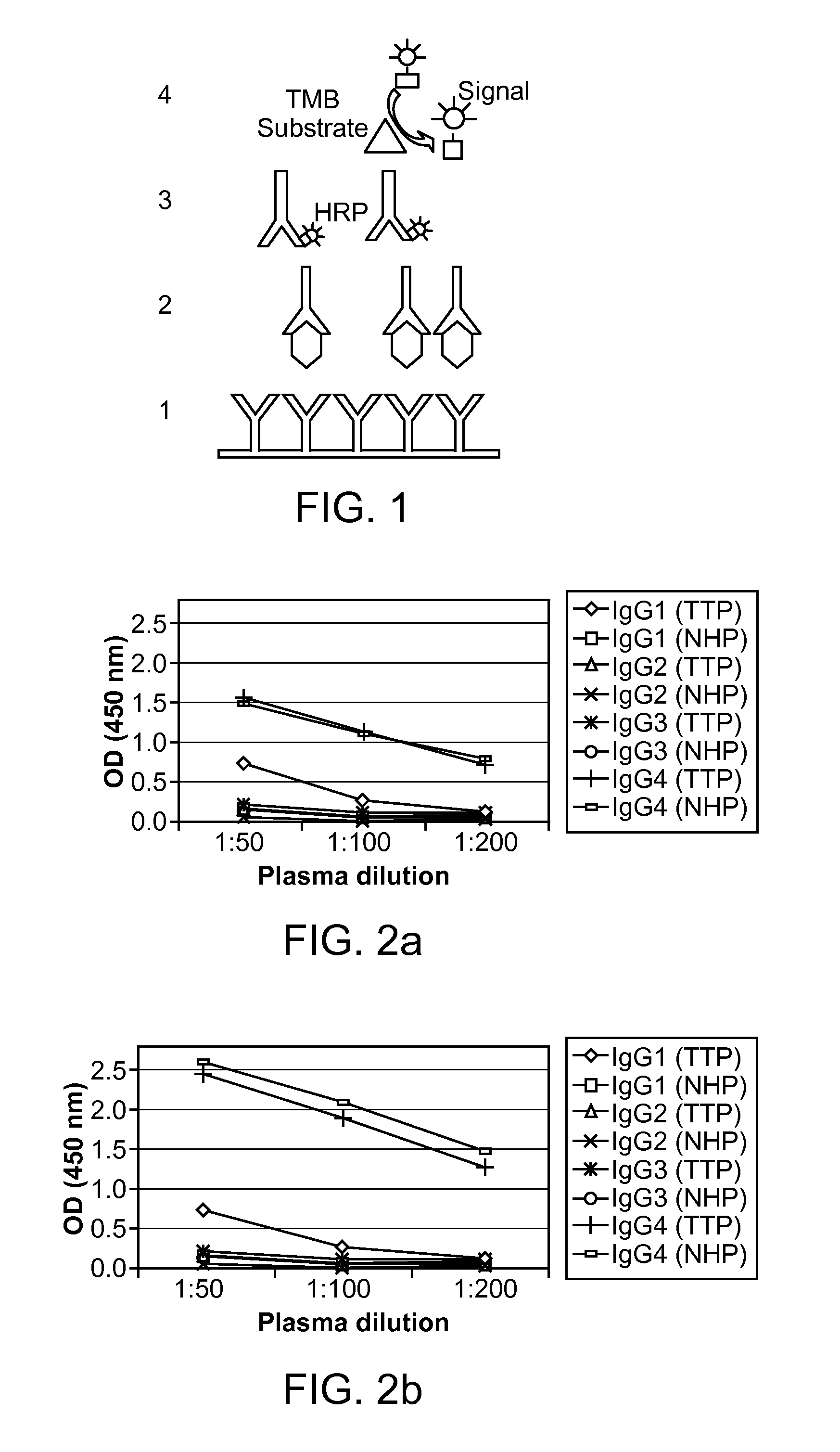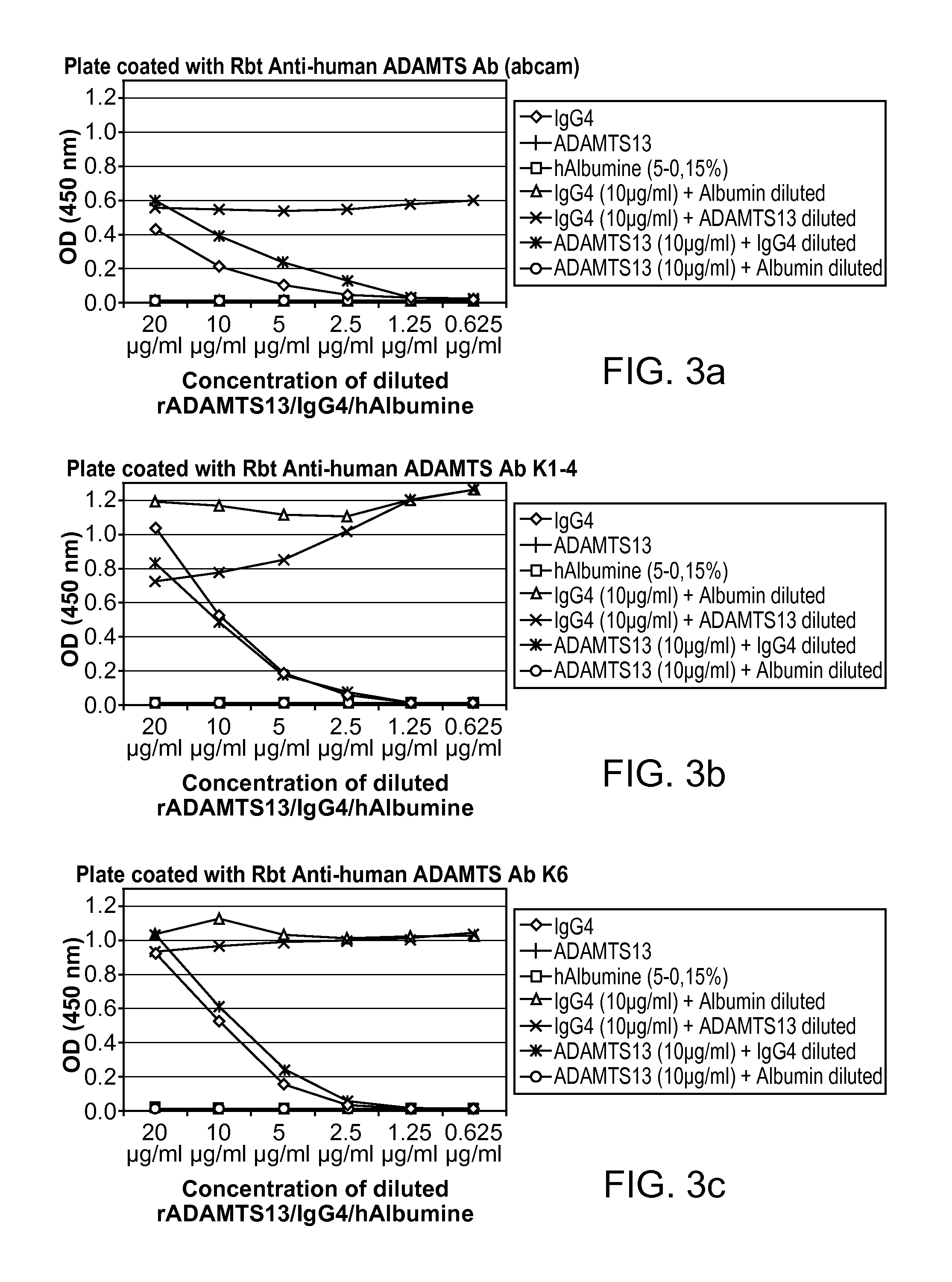Detection of circulating adamts13-antibody complexes
a technology of circulating adamts13 and complexes, which is applied in the field of detection of circulating adamts13antibody complexes, can solve the problems of adverse complement activation reaction damaging blood vessels, microthrombotic events and blood vessel damage, and drop in the number of red blood cells
- Summary
- Abstract
- Description
- Claims
- Application Information
AI Technical Summary
Benefits of technology
Problems solved by technology
Method used
Image
Examples
example 1
Recombinant ADAMTS13 (rADAMTS13)
[0072]Recombinant human ADAMTS13 with and without His-tag was expressed in human embryonic kidney cells (HEK293) or in Chinese hamster ovary cells (CHO), e.g. clone 938, as described (Plaimauer, 2002; WO2004 / 095027; WO02 / 42442). C-terminally His-tagged ADAMTS13 was constructed by the in-frame fusion of 6 histidine and 3 glycine residues as a linker with the C-terminal threonine residue (Thr-1427) of full-length ADAMTS13.
example 2
Anti-ADAMTS13 Antibodies
[0073]Polylconal anti-ADAMTS13 antibodies were either purchased (Abcam, ab28273) or produced by immunisation of rabbits: 1 to 10 male New Zealand White rabbits were immunized with rADAMTS13 according to example 1. 200 μl injection solution consisted of 100 μl buffer solution (860 μg rADAMTS13 in 20 mM Histidine, 150 mM NaCl, 0.05% Tween 80, 2% Saccharose, 2 mM CaCl2, pH 7.0) and 100 μl Adjuvant (Freund's Complete Adjuvant, CFA, for prime immunisation; Incomplete Freund's adjuvant, IFA, for booster immunisations). In 3 week intervals one prime and two booster immunisations were administered subcutaneous in 2-4 spots on thighs. Blood was withdrawn 3 weeks after the first booster and 2 and 3 weeks after the second booster.
[0074]Three different lots were produced, lot “K1-4” originating from pooled sera of 4 rabbits immunized with His-tagged rADAMTS13, lot “K6” originating from the serum of one rabbit immunized with His-tagged rADAMTS13 and lot “K1-10” originatin...
example 3
Affinity Purification of Anti-ADAMTS13 Antibodies
[0077]rADAMTS13 according to example 1 was coupled to NHS activated sepharose (Sepharose 4FF from GE Healthcare). To this end, 25 ml of NHS-activated Sepharose was washed and activated with 1 mM HCl, pH 3.3. After centrifugation, 25 ml rADAMTS13 was added in Coupling Buffer (100 mM NaHCO3, 500 mM NaCl, pH 8.3) and incubated over night at 4° C. Sepharose was centrifuged, washed and incubated for 2 h with Blocking Buffer (100 mM Tris-HCl, pH 8.5) at room temperature. The sepharose gel is subsequently moved into a column that was then filled and washed with Coupling Buffer. Further washing steps of the column included 3 cycles of washing with Blocking Buffer and Acetate Buffer (acetate, pH 4.5).
[0078]After purification on a Protein G column, anti-ADAMTS 13 antibodies according to example 2 were loaded onto the rADAMTS13-NHS-activated sepharose column and washed with Equilibration buffer in the presence of Zn2+ and Ca2+ (TBS, pH 8.4). Pur...
PUM
| Property | Measurement | Unit |
|---|---|---|
| equilibrium dissociation constant | aaaaa | aaaaa |
| equilibrium dissociation constant | aaaaa | aaaaa |
| equilibrium dissociation constant | aaaaa | aaaaa |
Abstract
Description
Claims
Application Information
 Login to View More
Login to View More - R&D
- Intellectual Property
- Life Sciences
- Materials
- Tech Scout
- Unparalleled Data Quality
- Higher Quality Content
- 60% Fewer Hallucinations
Browse by: Latest US Patents, China's latest patents, Technical Efficacy Thesaurus, Application Domain, Technology Topic, Popular Technical Reports.
© 2025 PatSnap. All rights reserved.Legal|Privacy policy|Modern Slavery Act Transparency Statement|Sitemap|About US| Contact US: help@patsnap.com



